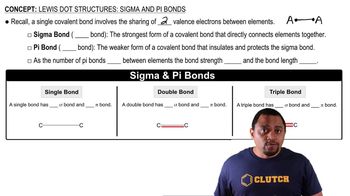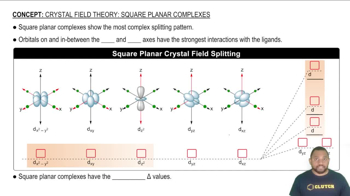Textbook Question
What is the hybridization of the central atom in d. TeCl2?
2
views
 Verified step by step guidance
Verified step by step guidance



What is the hybridization of the central atom in d. TeCl2?
Shown here are three pairs of hybrid orbitals, with each set at a characteristic angle. For each pair, determine the type of hybridization, if any, that could lead to hybrid orbitals at the specified angle. (a)
(b)
(c)
Which of the following statements are true? c. A 𝜋 bond is made from the sideways overlap of two p orbitals.
(b) Imagine that you could hold two atoms that are bonded together, twist them, and not change the bond length. Would it be easier to twist (rotate) around a single s bond or around a double 1s plus p2 bond, or would they be the same?
(b) What is the hybridization of the carbon atoms in each molecule?